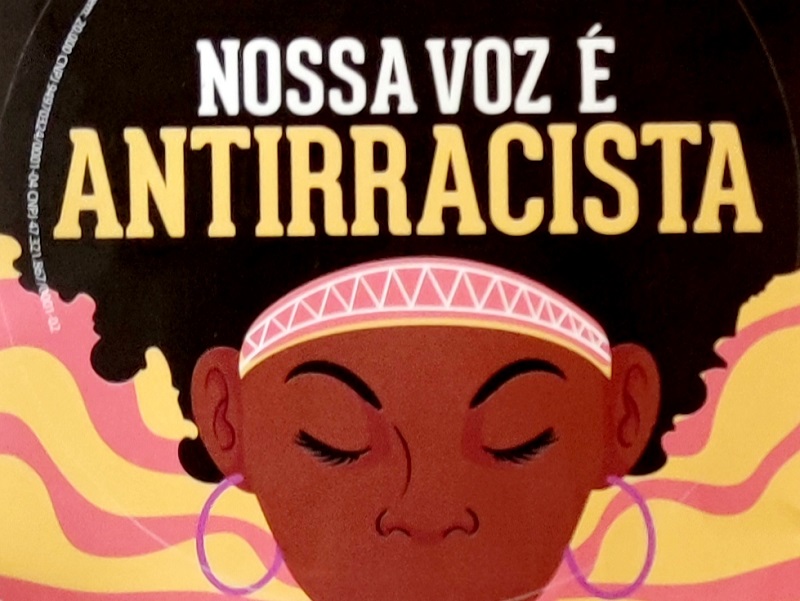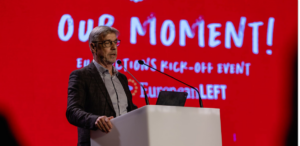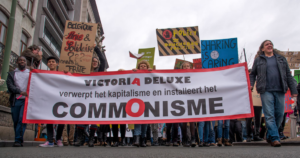How to make a left-wing government that brings together many political parties and interests? Let’s look to Brazil for inspiration.
Following Luiz Inácio Lula da Silva’s victory in last year’s presidential elections, Brazil’s new government was formed in the beginning of January 2023 and has already brought positive changes. Internationally, it has reinforced the current, second left tide in Latin America that began in 2018. In addition to Lula, last year the pink tide has been significantly extended also by the election of a left-wing president in Columbia, former guerrilla politician Gustavo Petro.
Domestically, Lula’s government reintroduces popular social programs which were in force already in the first and second presidential terms (2003 – 2010). One of them is bolsa familia (family pocket) which is intended helping many low-income families. It is expected that around 60 million citizens will receive this kind of social support.
The personal composition of Lula’s government is worth of analysing. It cannot be taken for granted. It is a carefully crafted political piece. It includes remarkable politicians and stateswomen and statesman. His government is a coalition government, comprising 37 ministers from 14 political parties. This may seem a lot by standards of many European countries but let us not forget that Brazil is the largest Latin American country (the fifth largest in the world) with a population of over 217 million (the seventh biggest in the world).
Lula (77-year old) is known to be originally from a working-class background, a trade unionist, and country’s president for the third term. Overall, Lula’s government is left-wing, with the various political parties being profiled from the political centre to the radical left. The primary influence is that of Lula’s Workers’ Party (PT = Partido dos Trabalhadores), but other parties also have their fair share of influence, including socialists and communists.
Influential Ministers: Finance, Labour, Foreign Affairs
First of all, it is worth noting the position of a prominent politician from the Labour Party, Fernando Haddad (60), the new Minister of Finance, who was previously a successful mayor of Sao Paulo and Minister of Education under the previous Lula’s government. Haddad ran for president in the last election when Lula could not because he was in prison after a fake trial. However, Haddad lost against Bolsonaro at the time, probably because he started campaigning relatively late in the election campaign, as the unfair criminalisation of Lula was still pending. When Lula was later freed, he was expected to make a quick return to big politics, succeeding Haddad as presidential candidate and winning the election.
Another important politician in Lula’s new government is the former metalworker and trade unionist Luiz Marinho (63), also from the Workers’ Party, now Minister of Labour. He already has experience in this role, having held it under the previous Lula’s government. He gained further experience as a long-serving mayor of Sao Bernando do Campo. He is famous for being a vigorous trade unionist who was able to pressure the Volkswagen car company not to lay off 10 000 workers at its Brazilian subsidiary.
The Foreign Minister is Mauro Veira (71), who was already in the same position under Lula’s presidential successor from the Workers’ Party, Dilma Rousseff. Veira is an experienced diplomat who has served as ambassador to the UN, the US, Argentina and Croatia. He has also worked in federal ministries, specifically the Ministry of Science and Technology and the Ministry of Social Security.
Communist Party Chairwoman: Research and Innovation
However, in this article, I would like to focus mainly on three prominent women in Lula’s government. Lula’s choice of a female politician from the radical left deserves a number of comments. Lula chose Luciana Santos (57), the leader of the Communist Party of Brazil (PCdoB = Partido Comunista do Brasil), as Minister of Science, Technology and Innovation. The PCdoB has long supported Lula’s Workers’ Party and did so also during the last presidential campaign. Now this is the first time the PCdoB has won a ministerial position in his government.
Luciana Santos is an engineer who graduated from the Federal University of Pernambuco. She has been a member of the Communist Party since she was 22-year old and the party president since 2015. She also has experience in local and high politics. From 1997 to 2000 she was a deputy in the Brazilian state of Pernambuco, then mayor of Olinda and Minister of Science, Technology in the same state. She was Deputy Governor of Pernambuco from 2019 until her appointment in Lula’s government. Luciana Santos is seeking greater cooperation with China. This cooperation in the field of science began decades ago after the establishment of diplomatic relations between the two countries in 1974, although it only gained importance later when China developed significantly. Minister Santos supports the cooperation in focusing on satellites, nanotechnology, energy and climate. She considers China a key partner for Brazilian industrialization and science and for exchanging experiences in these areas, such as public policies for innovation, public procurement, tax incentives, etc. Of course, it also cooperates with other countries at the same time.
Against Racism, Poverty and Violence against Women
Another figure in Lula’s new government is Anielle Franco (37) of the Workers’ Party, who has become Minister for Racial Equality. This is a pressing issue, as racism in Brazil, especially under the previous government of the far-right President Bolsonaro, has become much stronger. Anielle Franco studied English and literature at the State University of Rio de Janeiro, the Technical University of Louisiana and journalism at North Carolina State University. In her work, she worked to eliminate racism, violence and poverty.
She became particularly well-known in the public eye after her sister, Marielle Franco, a city representative in Rio de Janeiro, was brutally murdered in March 2018. Marielle was a sociologist and politician in the Party of Socialism and Freedom (PSOL = Partido Socialismo e Liberdade). She was famous for criticizing police brutality under the right-wing President Temer and advocating for the rights of women and Afro-Brazilians. On the fateful day, she participated in a debate on how young black women are changing the power structure. After leaving the debate, she was targeted by assassins who murdered her and the driver while driving from the next car. They fired nine shots at them, three of which hit Marielle in the head and one in the neck. The massacre sparked mass protests and demonstrations across Brazil, which were also attended by international participants of the World Social Forum held in the Brazilian city of Salvador in the previous days. In this context, it may be added that the Minister for Women in the current government is Maria Goncalves of the Centre for Popular Movements, who is known for her efforts against violence against women.
Afro-Brazilian Music and Culture
Past President Bolsonaro abolished the Ministry of Culture immediately after taking office. This was followed by futile protests. However, President Lula has now reinstated the Ministry after his inauguration and has appointed Margareth Menezes (60), a popular singer, composer and politician from Salvador, as Minister. Her musical output in samba, reggae and afrobeat is mainly from a black background. She focuses on axé, a musical style that combines Afro-Caribbean influences of reggae, calypso and others. Needless to say, such choices by Lula have brought his government considerable popularity. Lula made a similar move under his previous administration when he appointed as Minister of Culture Gilberto Gil, a very popular singer-songwriter who creatively fuses rock, samba, and reggae.
The Pitfalls and Hopes of the Government
There are, of course, more personalities in Lula’s new government that deserve attention. For example, there are two women defenders of the Amazon rainforest and its indigenous peoples. Marina Silva is the Minister of the Environment, which she was also under the previous Lula government, and Sonia Guajajara, who was born in the Amazon and became an activist for indigenous rights and the environment, heads the newly created Ministry for Indigenous Peoples.
The challenge for the new government will be to maintain and develop a promising left-wing politics, not only because Bolsonaro’s opposition is putting up obstacles, but also because different members of the government from several different political parties understandably have different political orientations. For example, it is worth keeping an eye on Vice President Gerald Alckmin, who is also Minister for Development, Industry and Foreign Trade. He was an opposition politician during the last Lula government and, although he has moved politically over the years, he does not entirely share Lula’s position. He also ran unsuccessfully for the presidency in 2006 and 2018, losing against Lula in 2006.
It is also relevant to mention Defence Minister José Múcio, who is close to the armed forces which needs to be transformed and reduced. Also, Lula’s original opponent for the presidency and influential politician Simone Tebet is pursuing the interests of her centrist Brazilian Democratic Movement (MDB = Movimento Democrático Brasileiro) from her position as Minister of Planning, which she received in return for supporting Lula after the first round of the presidential elections.
Lula’s government with socialist, communist and trade union politicians looks promising for Brazil, for the new left tide in Latin America as well as for other countries of the world. Lula’s ability to bring together left politicians, political parties, trade unions, and social, indigenous and civic movements in a single election campaign and subsequent government is surely an inspiration for European and other countries as well.



